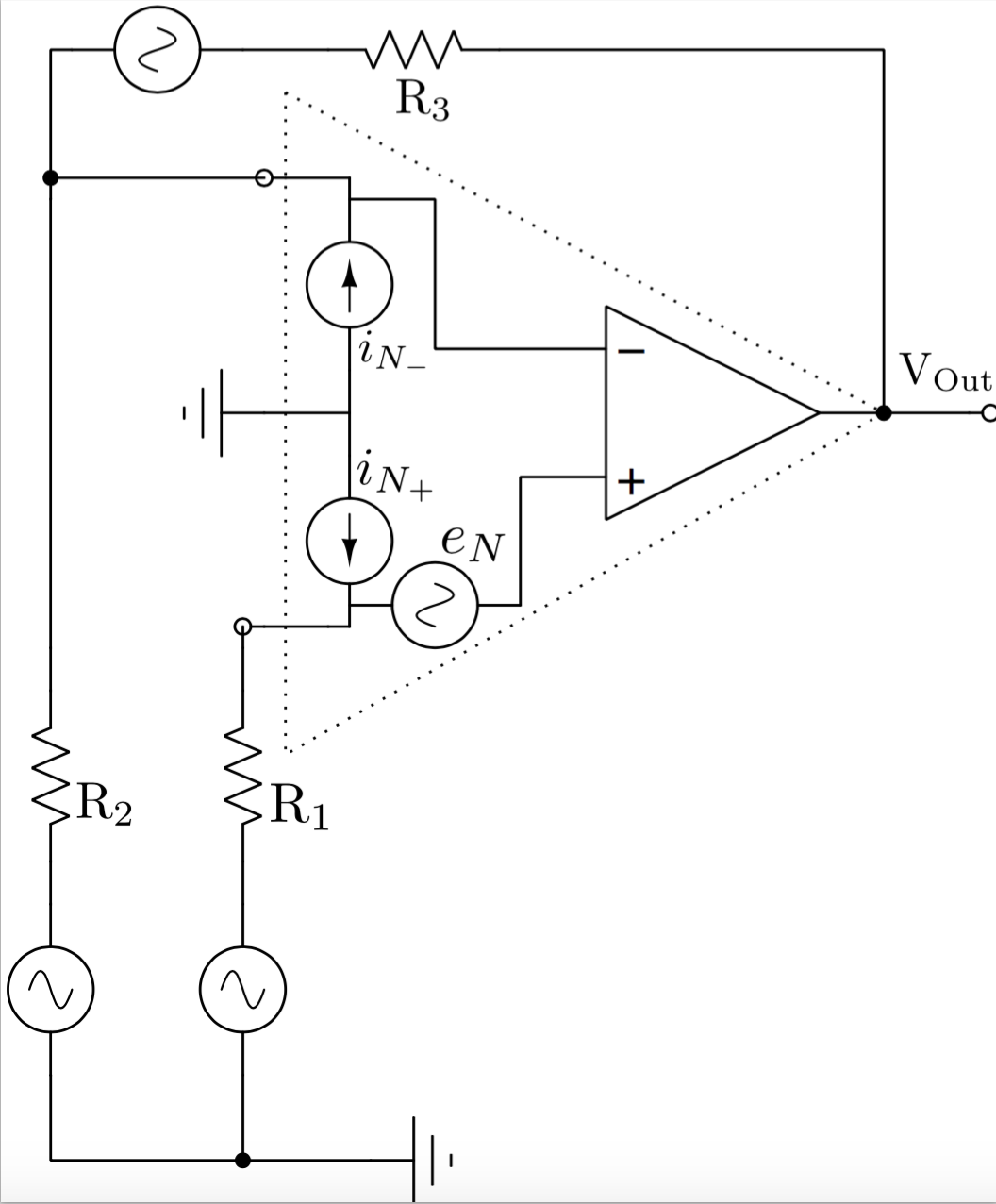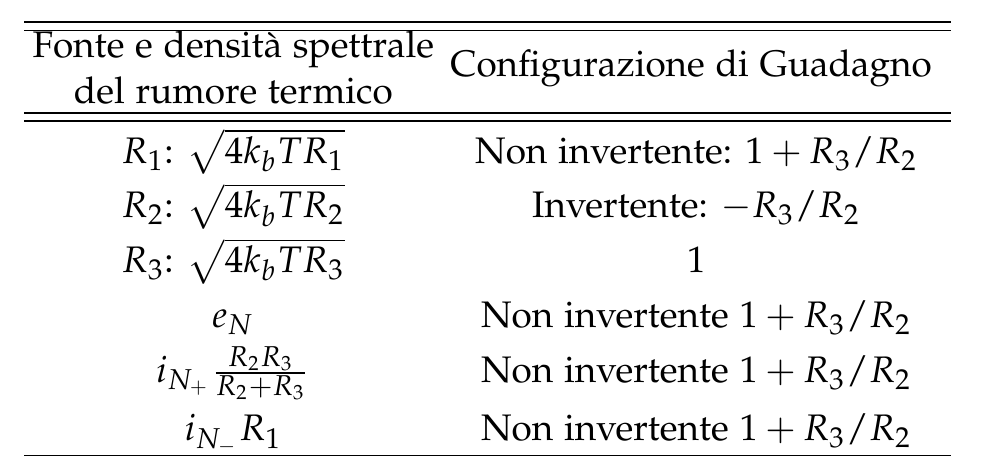I'm not going to solve your problem directly. The way to approach this is to think about which noise sources are going to be gained up by the amplifier. I will talk about voltage noise sources in this case (you will also have current noise sources but they are usually less). If you want to handle the current noise sources, then multiply them by the resistors an turn them into voltage noise sources, you can use superposition to do this and consider one noise source at a time.
- Find the noise sources on each terminal - If you have a circuit you will need to simplify these noise sources to a Vn at each terminal plus the internal noise source. This will make it easier to add them later on.
- Noise sources add by the sum of the squares, add the three noise sources by the sum of the squares
- Then gain all noise sources or your input refereed noise source total by the gain of the amplifier.
- Do you want to find the noise at the input or the output??? Some times you need to work backwards because you have a sensor on the input and you want to find the total noise of the circuit at the sensor (to see if you are going to meet requirements). You can find the total noise of the circuit at the output or at the input. To do this find the total at the output and then divide by the gain to find the noise at the input. If you have noise at the input and want to find out what it would be on the output make sure you multiply it by the gain. It is desirable to calculate the noise at the output because you want to know how many noisy bits you may have on an ADC.
It is important to remember that you need to pick one point on the circuit to find the equivalent noise at, most everyone wants to know the noise at the output of the amp. Is it input referred noise (which needs to be multiplied by a gain?) or output referred noise?
Another way you can check yourself is to use superposition. Consider each noise source at one time, zero out all other sources. If the noise source is before the input then multiply it by the gain of the amplifier to find the noise at the output. Do this for each noise source. Current sources (the amplifier current sources) need to be multiplied by a resistor to find the equivalent voltage source, then treat them like voltage sources. Then when you have found the equivalent noise for each noise source at the output, add them by the sum of the squares.
Here is a great reference on noise sources if you want to be an analog engineer, you need this book. Or go find it at a university library, its a great read. I'll include a diagram from page 269 which answers most of your question. Ott goes about it via a different method which I think is a little less intuitive but should give you a better feel for how to solve these.




